There are a ton of different lizards in the world (there are currently more than 6,500 described species, not including snakes, which are technically a group of highly specialized lizards), but some are more famous than others.
You may not have heard of most lizard species, but at least one group of lizards – the iguanas – are very familiar.
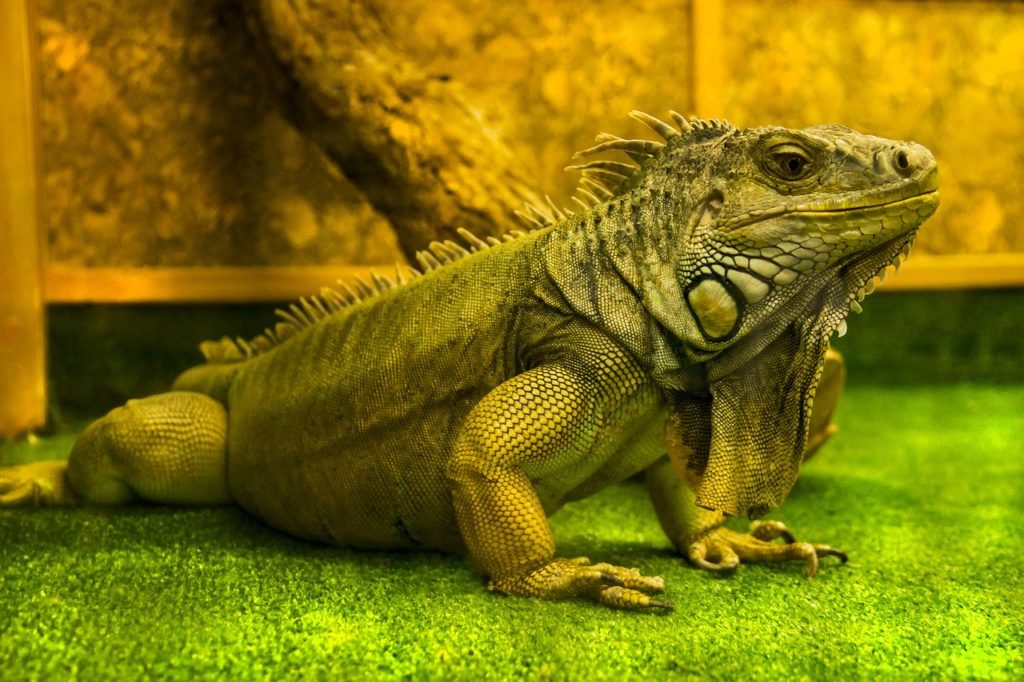
But while everyone has heard of the term “iguana,” and reptile enthusiasts may even be able to identify a few iguana species, there’s a lot more to these lizards than you may initially suspect.
We’ll explore iguanas in greater detail below so that we can help ensure your knowledge about these species matches your familiarity with the term.
Quick Navigation
What’s in a Name: What Does “Iguana” Mean?
The term “iguana” can mean different things based on the context.
Some may apply the term to any members of the infraorder Iguania (sometimes called the Iguanomorpha). But an infraorder is a very high taxonomic level, which typically includes a large number of families and genera.
This definition would mean that thousands of living species are considered “iguanas,” including swifts, anoles, chameleons and agamids.
This doesn’t seem particularly helpful, as the differences between these various species are significant.
Accordingly, most use the term “iguana” to refer to animals within the Family Iguanidae.
Authorities differ with regard to the specific composition of this group, but most agree that it includes the following genera: Amblyrhynchus, Brachylophus, Cachryx, Conolophus, Ctenosaura, Cyclura, Dipsosaurus, Iguana and Sauromalus.
We’ll dive into a few of the most notable genera within the family below and pay special attention to those that are prevalent in the pet trade.
Common Types of Iguanas
Here are a few of the most common types of iguanas:
The Green Iguana
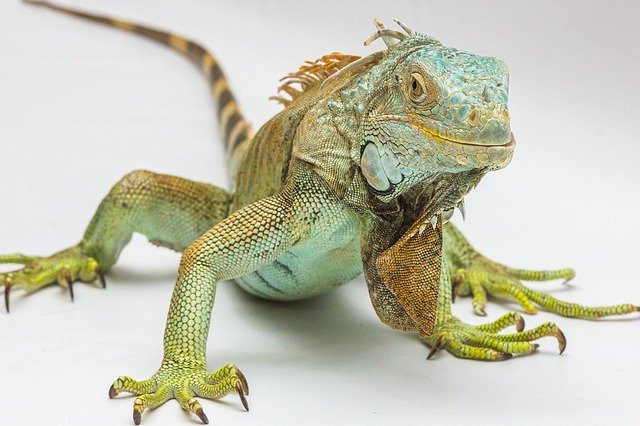
The green iguana (Iguana iguana) is undoubtedly the most familiar iguana species in the world.
In previous decades, they were also the most popular lizard species among keepers, but they’ve largely fallen out of favor for reasons you’ll soon understand.
Green iguanas are large lizards, who reach lengths of 6 feet or more. They bear spines along the back, have prominent jowls, and also have large dewlaps beneath their chins.
As their name implies, these lizards are largely green, but they frequently bear blotches and stripes of other colors, including blue, orange, black, white and everything in between.
Green iguanas – like most other iguanas – are primarily herbivorous, but they will eat animal-based foods from time to time (particularly as juveniles).
They typically spend long periods of time basking on branches in their native habitats. They also swim well and will not hesitate to dive into the water to escape predators.
As you can tell, these are certainly visually impressive and interesting lizards.
But, as mentioned earlier, they’re no longer as common among reptile keepers as they once were. There are a few reasons for this:
- Their large size means they require gigantic enclosures, approaching the size of a closet or small room.
- While some become quite tame, others remain nervous and defensive. Given their size and willingness to bite or lash out with their whip-like tails, they’re capable of inflicting serious injuries.
- These lizards require elaborate lighting fixtures, which are difficult and expensive to provide.
- It can be challenging to devise a healthy diet for these lizards.
Don’t misunderstand: Green iguanas are cool lizards. But they are best reserved for advanced keepers.
There is one other lizard in the genus Iguana – the Lesser Antillean iguana (Iguana delicatissima). However, it is critically endangered and unavailable in the pet trade.
West Indian Rock Iguanas
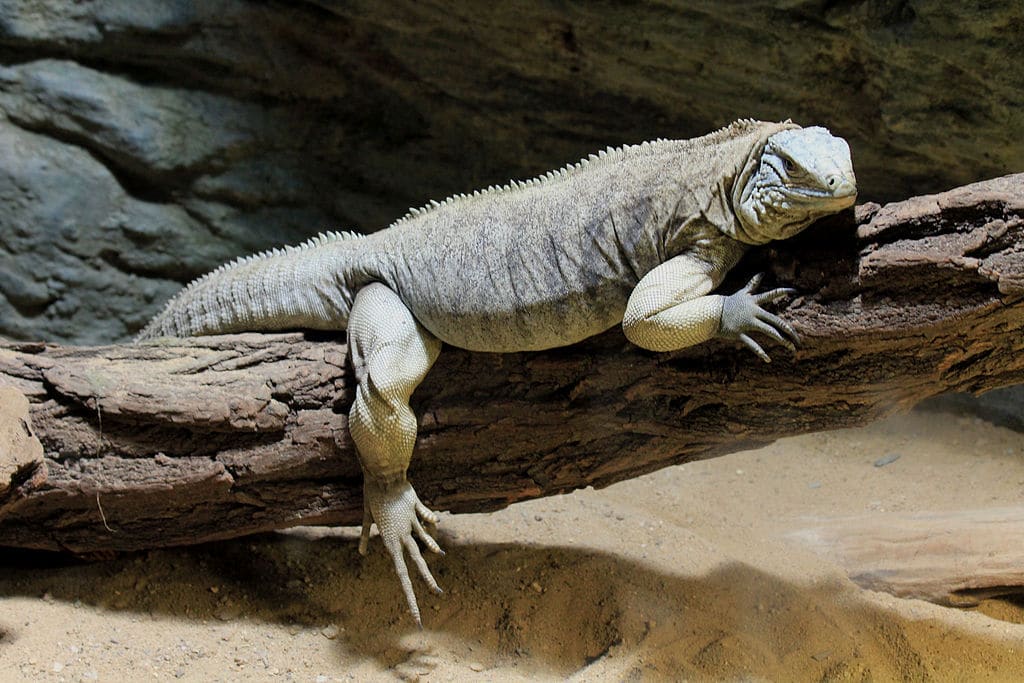
The genus Cyclura currently contains 10 described species, as well as a handful of subspecies.
They are only found living in the West Indies, where each species is classified as endangered (a few are even classified as critically endangered).
Nevertheless, captive-bred individuals of a few species – most notably the Cuban iguana (Cyclura nubila) and the Rhinoceros iguana (Cyclura cornuta) – are available to keepers.
Cuban iguanas usually reach lengths of about 4 feet, but exceptional specimens may exceed 5 feet in some cases. Their build is not terribly dissimilar from that of their green cousins, but they are somewhat thicker and typically covered in a combination of browns, greys, and black. They do climb, but they aren’t as arboreal as some of the other lizards in the Family Iguanidae.
Rhinoceros iguanas are largely similar-looking, but they bear a small “horn” on their snouts (hence their common name). These lizards are also thicker than green iguanas, and occasionally approach 20 pounds in weight.
Rhinoceros and Cuban iguanas are probably better suited for captive maintenance than their green counterparts, but their high price tag often puts them out-of-reach for beginners. Like their green cousins, these are primarily herbivorous lizards, but they’ll consume animal-based foods from time to time.
Spiny-Tailed Iguanas
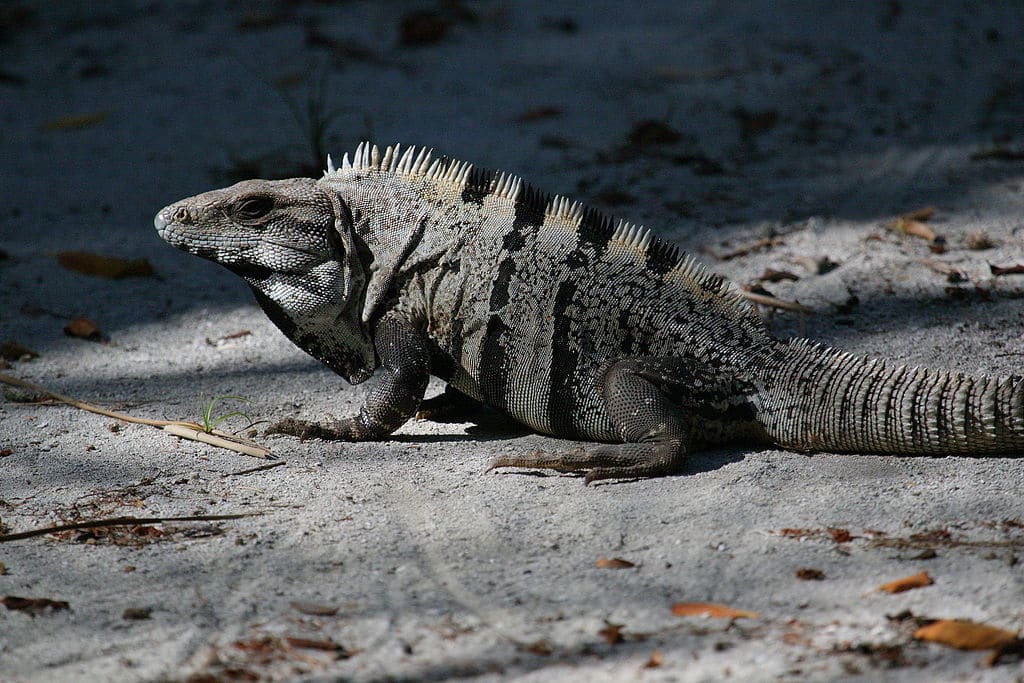
Spiny-tailed iguanas (Ctenosaura spp.) are, in the my opinion, underrated lizards among reptile enthusiasts.
They certainly aren’t appropriate for beginners, and they exhibit some traits that make them undesirable by many – but they still deserve consideration by experienced keepers who want something a bit different.
Spiny-tailed iguanas are named for the keeled scales that cover their long tails.
These keels likely serve a protective function, as the lizards will whip perceived threats with their tails – something that many keepers get to experience firsthand.
In fact, one of the primary reasons these lizards aren’t more popular is their often-foul temperament.
Many spiny-tailed iguanas are nervous, flighty and defensive, and they won’t hesitate to bite the hand that feeds them.
There are more than a dozen recognized species within this genus, but the black spiny-tailed iguana (Ctenosaura similis) is the only one regularly available to keepers.
These lizards require a very large enclosure, with enough height to provide climbing branches for these semi-arboreal lizards.
These are omnivorous animals, but plants should form the bulk of their diet.
If you decide to maintain spiny-tailed iguanas, it is wise to begin with captive bred individuals.
Desert Iguanas
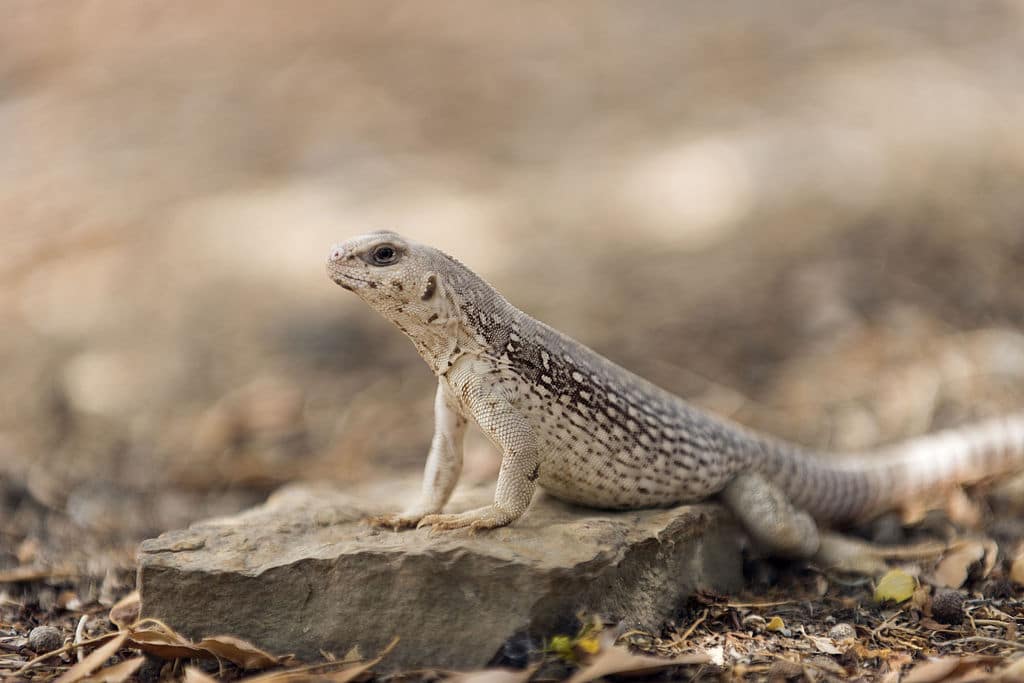
The desert iguana (Dipsosaurus dorsalis) is the only described species in the genus Dipsosaurus. A denizen of arid habitats throughout portions of Mexico, California and Arizona, these lizards live a much different lifestyle than their green relatives who spend their days clinging to trees in tropical rainforests.
Desert iguanas only reach about 18 inches in length, 60% of which is due to their long tails.
They’re largely clad in a combination of white, dark grey and rich reddish-brown tones. They also have a more cylindrical – bordering on dorsoventrally flattened – bodies than their green, tree-dwelling cousins do.
Desert iguanas are rarely available as captive-bred offspring, and they’re generally a pretty tricky species for beginners to maintain.
Wild-caught adults can be very difficult to acclimate, and they often refuse the plant matter provided to them (although edible flowers sometimes prove irresistible).
Nevertheless, they can be very rewarding captives for experienced keepers, and they are well-suited for elaborate (if large), desert-style terraria.
Chuckwallas
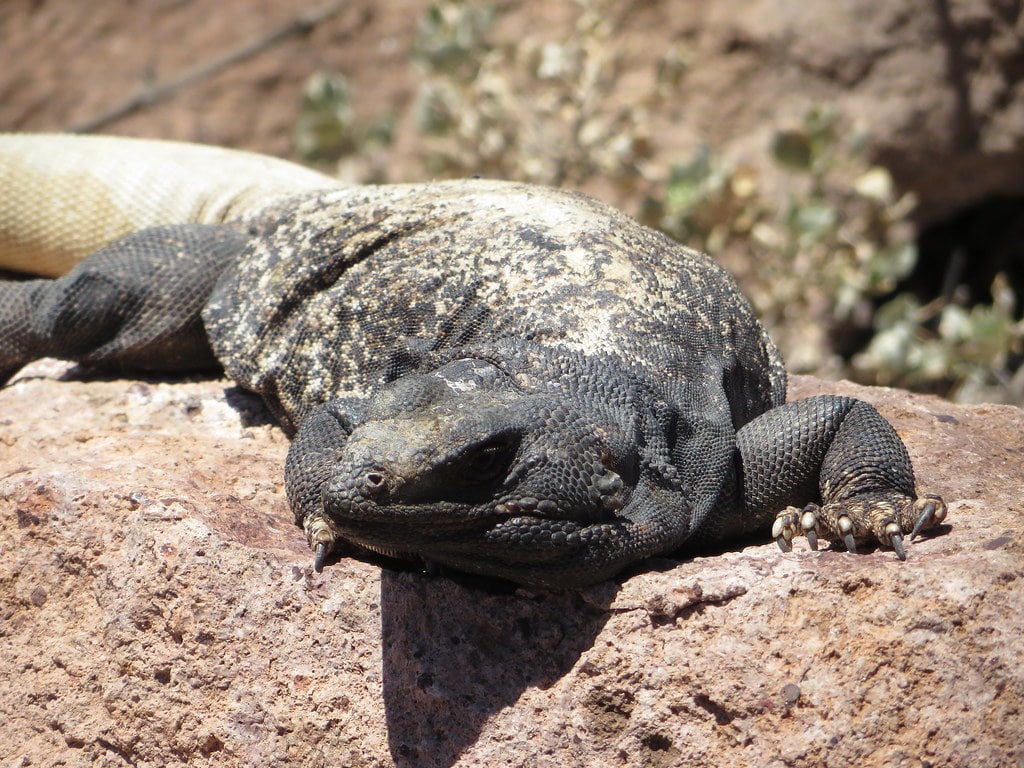
Chuckwallas (Sauromalus spp.) are very different from most iguanas that hail from tropical climates. They, like desert iguanas, are native to the arid western portions of North America, and they inhabit the same types of ecological niches that uromastyx (Uromastyx spp.) do. They’re also built like uromastyx, except that desert iguanas are not as robust and lack the spike-covered tails that their Old-World relatives bear.
Chuckwallas are not especially common in captivity, but they can be found with a bit of effort. There are about half a dozen or so species in the genus (depending on the authority consulted), but the common chuckwalla (Sauromalus ater) is the only one available with any regularity.
One of the most interesting things about these lizards is their habit of living near rocky outcroppings. When frightened, they’ll seek shelter among the rocks, where they may wedge themselves into a tight space and fill their bodies with air. This makes them difficult for predators to access and extract.
Chuckwallas reach about 18 inches or so in length, but they have fairly stock bodies. They can be acceptable for inexperienced keepers, as long as one selects a captive bred individual and sets up an appropriate habitat.
Other Iguanas
The remaining members of the Family Iguanidae are rarely available to reptile enthusiasts, and some would be completely impractical to keep in a private facility. Nevertheless, we’ll discuss them briefly below.
The Fiji Iguanas
There are four living species of the genus Brachylophus. Unfortunately, while they’re certainly beautiful, these lizards are unavailable to hobbyists. All four species are relatively similar looking, being largely clad in bright green, with various white, blue and yellow markings. Interestingly, these lizards are capable of darkening their color significantly – a behavior that is often used to frighten off would-be predators.
Fiji iguanas are almost completely herbivorous as adults, but juveniles will occasionally consume insects.
Iguanas of the Galapagos
There are two different genera of iguanas that call the Galapagos Islands home: the marine iguanas (Amblyrhynchus) and the land iguanas (Conolophus). There is one described marine iguana species (Amblyrhynchus cristatus) and one to three land iguanas, depending on the authority you consult (their taxonomy is the subject of considerable debate).
Marine iguanas are truly unique lizards, as they subsist almost entirely on algae. Some individuals even dive into the ocean to forage beneath the surface. This would obviously make them inappropriate for private keepers, but they’re protected by law and therefore illegal to keep anyway.
Galapagos land iguanas resemble (and are suspected to be closely related to) marine iguanas. However, they do not forage in the ocean; instead, they tend to subsist on more typical iguana fare. Like marine iguanas, they’re unavailable to private keepers.
The Other Spiny-Tailed Iguanas
Not to be confused with the spiny-tailed iguanas of the genus Ctenosaurus, these lizards (who’re members of the genus Cachryx) are relatively small and built almost exactly like Uromastyx lizards. Regardless, they’re poorly understood and not common in captivity. There are two species in the genus.
How to Pick the Best Iguana for You
Now that you have familiarized yourself with some of the most notable members of the Family Iguanidae, you’re probably trying to figure out which one will make the best pet for you. We’ll try to help you do so below, by examining some of the things you’ll want to consider when making your decision.
What Size Lizard Do You Want?
One of the first questions all reptile enthusiasts should ask themselves when deciding upon a species to maintain relates to size. Specifically, you must decide what size lizard you can care for. This not only means determining how much space you have available for an enclosure but also your comfort level – large lizards can be intimidating, difficult and represent an injury risk for the keeper.
If you don’t have very much space available and want to minimize the risk of handling your new pet, you’d be wise to consider chuckwallas or desert iguanas. Both species are generally less than 18 inches in length, and they can be maintained in habitats with about 4 to 8 square feet of space.
Conversely, green iguanas, Cuban rock iguanas, spiny-tailed iguanas and rhinoceros iguanas all reach at least 3 to 4 feet in length, and some individuals will grow even larger. Accordingly, these species all require massive habitats and a keeper who does not mind interacting with large animals.
How Important Is Temperament to You?
Simply put, some iguana species are typically more docile than others. Spiny-tailed iguanas, for example, often have prickly temperaments, even when raised from a young age. Conversely, chuckwallas are rather shy, inoffensive lizards who’ll rarely react aggressively to their keeper’s hands.
Most others fall somewhere in between these two examples. Desert iguanas are generally disinclined to bite, but they’re quite flighty and nervous. Cuban iguanas and rhinoceros iguanas often become quite docile – even stoic – if handled frequently from a young age.
Green iguanas vary in terms of temperament. Some become remarkably docile animals, but others remain irascible, no matter what the keeper does to make the animal feel comfortable.
Do You Want to Maintain a Dry or Wet Habitat?
The humidity level of your new pet’s enclosure will need to reflect that of his home range, so prospective keepers need to decide what type of habitat they’d like to provide. Generally speaking, arid habitats are easier to maintain and better-suited for beginning keepers, but high-humidity, rainforest-style habitats are often more (subjectively) appealing. Of course, there are also species that require humidity levels that fall between these two extremes.
Just make sure you select a species that reflects your desires.
If you’d prefer to maintain a desert-style habitat, you’ll need to select a chuckwalla or desert iguana; if you prefer a rainforest-style habitat, you’ll want to opt for a green iguana. Several other iguana species will thrive in moderately humid enclosures. This would include Cuban iguanas, rock iguanas, and spiny-tailed iguanas, among others.
How Much Do You Want to Spend on Your New Pet?
As with all things in life, costs are something you must consider when picking your new pet. And this not only includes the initial cost of your new lizard, but also the cost of his habitat, lighting fixtures, and other supplies. You’ll also have to pay for the on-going costs of lizard care, such as food, veterinary care, and supplements.
Green iguanas probably bear the cheapest price tag of the lot, while rhinoceros iguanas and Cuban rock iguanas are likely the most expensive of the regularly available species. Spiny-tailed iguanas, chuckwallas, and desert iguanas will fall somewhere in between these two extremes.
However, it is important to consider that green iguanas will require much larger habitats than the three who are in the middle of the iguana pricing spectrum. This is a factor that many fledgling keepers, unfortunately, fail to consider at the outset.
Which Species Do You Like Most?
The final thing you must consider when picking an iguana is the simple matter of your subjective preference. Maintaining any lizard will entail some fun times and some not-so-fun times; accordingly, it is important to pick a species you wholeheartedly enjoy, to help sustain you through the difficult times.
Personally, I’m a huge fan of spiny-tailed iguanas. Sure, they often have less-than-friendly temperaments, which can make interacting with them challenging, but I just like them. I’m also a big fan of desert iguanas, despite the significant husbandry challenges they present. On the flip side, I’m not a fan of green iguanas – likely a byproduct of the years I spent caring for hundreds of them in retail environments.
But you’ll have your own reasons that you like or dislike a given species. So, take some time to consider which species excite you the most, and be sure to factor that into your decision-making process.
Conclusion
As you can see, iguanas are a fascinating group of lizards, and they exhibit more diversity than many would initially suspect. Some iguanas can and do make excellent pets, while others are entirely inappropriate for captive maintenance (aside from zoological institutions).
So, just be sure to educate yourself on the various iguana species that are available to hobbyists, consider the resources you can provide and try to pick the best one for your interests and lifestyle.